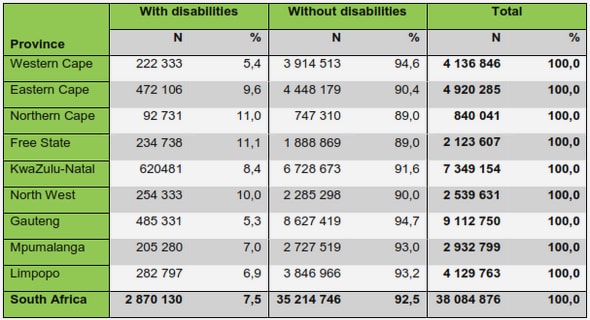Get Complete Project Material File(s) Now! »
Spatial distribution of the points of interest
Having computed synthetic cartographic models, it is now possible to define the spatial distribution of the individual points (e.g. points of interest as mineral deposits, for instance) throughout the considered area. A set = {m | C(m)} of individual points m – possessing a characteristic property C(m) – is created. The location for each individual point m is directly controlled by its shortest distance to neighboring ellipses f and its shortest distance to neighboring segments u (Fig. 1c). Thus the spatial location of individual points is strongly related to spatial distributions of ellipses and segments as function (f, u). During computation, the shortest distances are automatically calculated in a way to follow density probability functions selected by user, one for the ellipses and one for the segments. All types of functions can be fixed in the software and in the case of natural examples modeling, the most suitable distribution may be chosen to fit with the statistical characteristics calculated from the shortest distance measurements in between points and polygons (e.g. deposits and plutons) and points and polylines (e.g. deposits and faults or shear zones).
The procedure for calculating points‘ coordinates can be detailed as follows. At first, the theoretical (input) density probability functions FY() and UY() for the spatial distribution of the individual points around ellipses and segments, respectively, are defined by user.
Classification of geometrical configurations using entropy
As shown above, and as displayed on figure 3, a considerable number of synthetic cartographic models may be computed using the procedure developed in this study. The contrasted map geometrical configurations can be characterized through the calculation of different parameters such as the spatial density of the geometrical objects (ellipses and/or segments), their clustering factor, mean shortest inter-distance, alignments, etc. However, even though a certain grouping could sometimes be graphically done between different cartographic patterns, it is often hard to make a clear and simple classification of them from the parameters considered above. Moreover, for a natural case study, it is also tough to distinct, a-priori, in between the geometrical configurations that can offer good conditions or not for predictivity map calculations.
Therefore, we propose here to use the concept of entropy proposed by Shannon (1948, 1963), which can quantify the information contained in a given model (Fig. 3). The calculation of the entropy value corresponding to one particular model is made through the definition of the statistic laws for spatial distribution of objects throughout the given area. The empirical determination of these laws – named ―expected distribution‖ in this paper – must be performed considering a points set representative of any given location throughout the area. Such a set of points q has been created along a regular and evenly spaced lattice; the number of points NQ is dependent on the total area of the zone as well as the total area occupied by the ellipses: NQ = (S – SE) / (cellsizeX.cellsizeY) (2.21)
where cellsizeX and cellsizeY are the cell size values along X and Y axis, respectively. In a way to ensure that this set points is well representative of ―any‖ given location of the considered area, a minimum of 50 by 50 nodes has been used for the computation in the present study.
Histogram construction
All types of statistical distribution of the shortest distances between polygonal or lineal objects and individual points m (set ) or all map points q (set ) are represented on frequency histograms, which construction is done using the following technique: the amount of intervals equals N , with N the number of points, and the size of interval equals ni (max min ) / N , (2.22).
with max and min the maximum and minimum distance from any nearest object, respectively (Gmurman, 2003). For convenience we will round off ni to its whole part value. Each point m or q can be characterized by its shortest distances to neighboring ellipses and segments. The number of points lying in each histogram interval is normalized by the total number of points N, which gives the histogram of probabilities of any point hitting in the interval set. The corresponding histograms can be approximated by functions FX(ρ) and UX(ρ) for all map points q and FZ(ρ) and UZ(ρ) for individual points m, where F and U refer, respectively, to the shortest distance between points and ellipses and between points and segments (see Appendix B for more details).
Test methods of statistical hypotheses
The theoretical model of distance distribution method is based on looking at the difference between expected (distance distribution between each objects types and all maps‘ points) and observed or empirical distribution (distance distribution between each objects types and another set of points, like deposits) (Berman, 1977).
To answer what can be actually considered as an anomaly of spatial distribution, we will firstly define an aspect of function built according to random normal distribution, i.e. randomly define positions of points with respect to other objects. For this purpose we will count the shortest distances from each point to neighbor objects, on the surface limited by the studied area (cf. Fig. 1c), by taking an example of ellipses e from set . Using the rule of histogram construction presented above, two density probability distributions FX – expected (for density probability distribution of all points q spatial locations on the map), and FZ – output (for density probability distribution of individual points m spatial locations; see Fig. 6).
Different statistical tests exist to define the value of a statistical distance between the given distribution and the expected one and such tests can thus be used to define the anomaly existence (Appendix C). The first statistical test is used to define significant distinction between mathematical expectances of two probability distributions (Kendall et al., vol.2, 1979). The second is the Pearson‘s 2 used to define significant similarities between theoretical – normal distribution law – and empirical probability distributions (Chernoff and Lehmann, 1954; Placket, 1983). The last one is based on the Kullback-Leiber DKL distance calculation (Kullback and Leiber, 1951), showing how one discrete probability distribution differs from another one (see Appendix C for details).
Influence of ellipses spatial distribution on the recognition of point sets distribution anomalies
In a way to study the influence of ellipses‘ map geometrical configuration on the level at which anomalies of points of interest spatial distribution could be highlighted, we propose here to express the expected distribution for all map points FX(ρ), empirically calculated from the map data, using a theoretical approach which leads to the definition of the theoretical expected distribution law FX‘(ρ).
In our case, the empirical way for computing the expected distribution FX(ρ) consists in calculating the shortest distance between any point of the map and the set of ellipses. On the other hand, the theoretical way can be detailed, as following.
If considering a random distribution pattern of a point set, in two dimensions, Clack and Evans (1954) show that the expected mean distance in between points can be expressed by 1/ (2 ) e E , (2.25).
where E is the density of points. In the present study, a similar approach can be applied to study ellipses spatial distribution, considering ellipses centers as points and adding the corrections needed to take into account the spatial extent of such objects. The expected mean distance in between ellipses centre points is thus also given by (2.25) (Clack and Evans, 1954). The corrections needed to adapt the equations of Clack and Evans (1954) to the case of ellipses is done subtracting two e R , the ―average‖ radius of ellipses to ex , i.e. 2 E ex e R .
Influence of segments spatial distribution on the recognition of point sets distribution anomalies
As for the case of the set of ellipses, one could question the influence of the geometry of segments on the ability of statistical parameters to highlight distribution anomalies of a set of points of interest around those objects.
In contrast with ellipses, no theoretical approach can be applied or adapted to describe the geometrical distribution of a segments set and the only one empirically calculated UX expected distribution will thus be used in that case. At least 1000 models have been computed using the procedure and software presented above and empirical curves are constructed using different geometrical direct models. Diagram of figure 11a shows the dependence of the mathematical expectance for the expected distribution of shortest distances between points of interest and segments against the number of segments. For the same reason as the one exposed before, the mathematical expectance value M[UX] can be expressed as a function of the average value of segment length in a way avoid scale problems and to consider more universal curves.
Figure 11b displays an abacus view of the relationship between the average and the total length of segments values and can be compared to the one displayed on figure 10 for the set of ellipses. As for the ellipses, a ―decision area‖, a ―risk zone‖ and a domain where anomalies can not be highlighted can be drawn on the abacus, in function of a fixed M[UX] value. As an example (see Fig. 11b) for a case study where an average value M[UZ] = 0.9 is computed from the spatial distribution of the points of interest around the segments, a minimum value of 2 is needed for M[UZ], the mathematical average value for the expected distribution of any given point, if one wants to unambiguously determine that a spatial distribution anomaly exists and, thus, that the spatial distribution of segments statistically controls the one of the point of interest. In a same way as for the ellipses, a point can be represented on the abacus in accordance with the parameters characterizing the geometrical configuration of the segments for a given map. Four types of the models described in figure 3 have initial parameters of segments geometries that well satisfy the mathematical expectance = 0.9 (Figure 11b and 11c), which means that anomaly distributions, if existing, could be recognized around segments in these cases.
Table of contents :
REMERCIEMENTS
INTRODUCTION
I. ÉTAT ACTUEL DE LA PRÉVISION DES ZONES AURIFÈRES BASEE SUR DES DONNÉES GÉOLOGIQUES ET GÉOPHYSIQUES (en russe)
1. Les différents types de minéralisation aurifères
2. Hypothèses de relatives à la formation des systèmes minéralisés
3. Méthodes statistiques pour la prévision des gisements d’or
4. La prévision des zones aurifères par des méthodes géophysiques
5. Approches actuelles de la modélisation numérique d‘un objet géologique en 3-D
II. METHODOLOGIE DE L‘ANALYSE PROBABILISTE DES RELATIONS SPATIALES ENTRE LES GISEMENTS AURIFERES ET LES STRUCTURES CRUSTALES
1. Modélisation directe probabiliste
Publication n°1
Direct statistical modeling and its implications for predictive mapping in mining exploration. Ore Geology Reviews (Soumis)
2. Conclusions
III. MODELISATION 3-D DES STRUCTURES CRUSTALES DE L‘YÉNISSEI RIDGE (en russe)
1. Contexte géologique
2. Données géophysique disponibles
2.1. Anomalies de Bouguer complète et anomalies magnétiques
2.2. Données régionales séismiques le long des profils « Batholite » et « Shpate »
2.3. Données de sondage magnétotellurique le long du profile « Batholite »
3. Apports de méthodes indirectes et inverses appliquées aux champs potentiels
4. Le modèle gravimétrique de l‘Yenissei Ridge; Visualisation en 3-D
4.1. Modélisation directe des coupes « Batholite » et « Shpate »
4.2. Des coupes « Batholite » et « Shpate » au modéle 3-D de la croûte sous l‘Yenissei Ridge
4.3. Implications géologiques et géodynamique
5. Conclusions
IV. MODELISATION PROBALISTIQUE DES ZONES AURIFERES DE L‘YENISSEI RIDGE
1. Différentes méthodes probabilistes
Publication n°2
Statistical analysis of geological and geophysical data for the predictivity mapping of gold zones of the Yenisei Ridge. // Russian Geophysics, 2010, № 4 pp.47-59 (en russe)
V. SYNTHESES ET CONCLUSIONS
1. Synthèses des résultats
2. Analyse des nouvelles zones aurifères et leur comparaison avec les constructions antérieures
3. Utilisation de modèle 3-D géologique pour la prévision des zones aurifères
REFERENCES …


